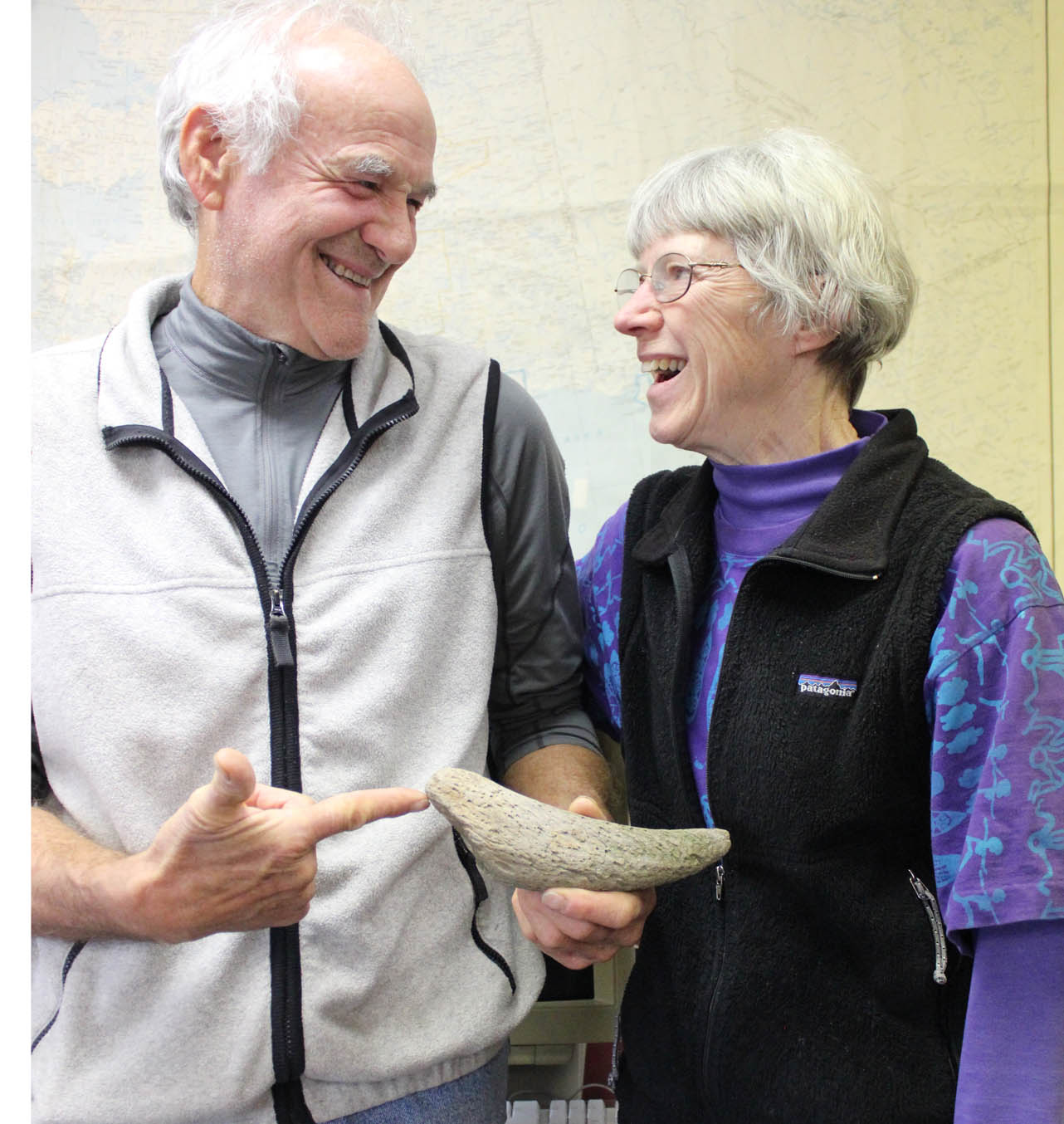There was no doubt in Phil Gordon’s mind what he saw sticking out of the ground near the mouth of Diamond Creek on Jan. 4. It was the tip of a horn.
“When I saw it, I thought, ‘Oh, I know you,’” said Gordon, who grew up on a farm and can give graphic firsthand accounts of dehorning cattle.
With the help of local historian Janet Klein, Gordon now knows his find was the tip of a steppe bison horn and, through carbon dating, also knows it is older than 43,500.
“This was our neighbor,” said Gordon, his smile wide, his eyes sparkling with the thrill of his discovery. “Cook Inlet was full of ice. Kachemak Bay was full of ice. There were glaciers spilling down from a broad pass from Talkeetna and here was this guy or gal.”
This is not the first steppe bison remain found in the Diamond Creek area. In 2012, A. J. Weber discovered a horn and partial skull near the spot of Gordon’s find. Radio carbon dating of that piece puts it at greater than 43,500. In 1948, a horn core also was reported by R. B Gray, and given to the University of Alaska Museum. Klein said she has been told Gray was a resident who lived in the Diamond Creek area.
This also is not Gordon’s first find. In 2003, he was hiking near Deep Creek after some flooding had occurred and found a piece of woolly mammoth tusk that was carbon dated at 31,740. In 2011, he came across a tooth fragment near Bidarka Creek area. Radio carbon dating placed the tooth fragment at 39,620.
“This is not a ghost from our past, but clearly a signal there was life long before what we decided property values were,” said Gordon, of the steppe bison horn fragment. This brings to 18 the total number of specimen Klein is aware of, “with 12 radiocarbon dates indicating that Pleistocene megafauna roamed the lower Kenai Peninsula 20,400 to more than 48,500 years ago,” said Klein.
For more information on specimen found, their identity and age, contact Klein at 235-8925.



